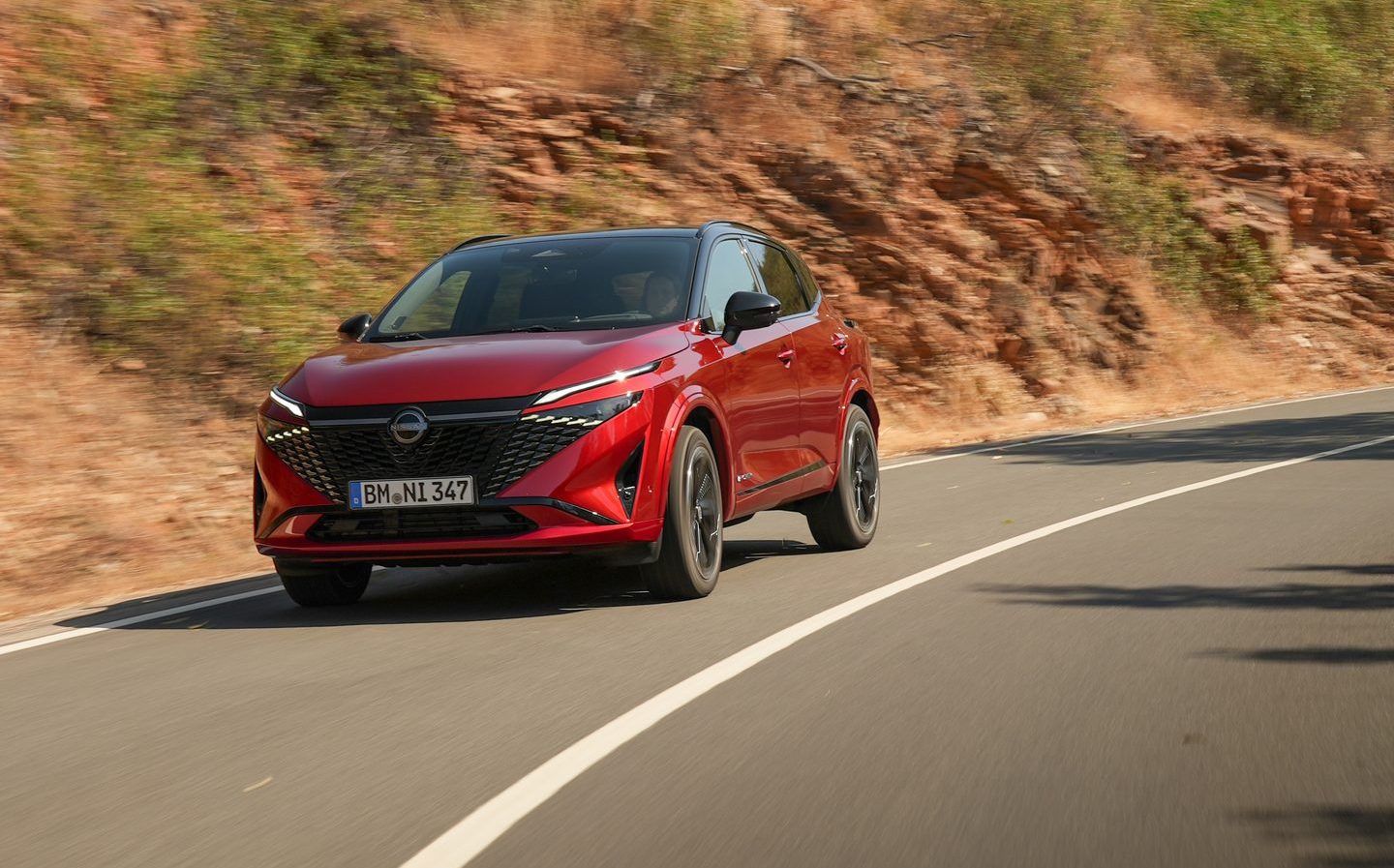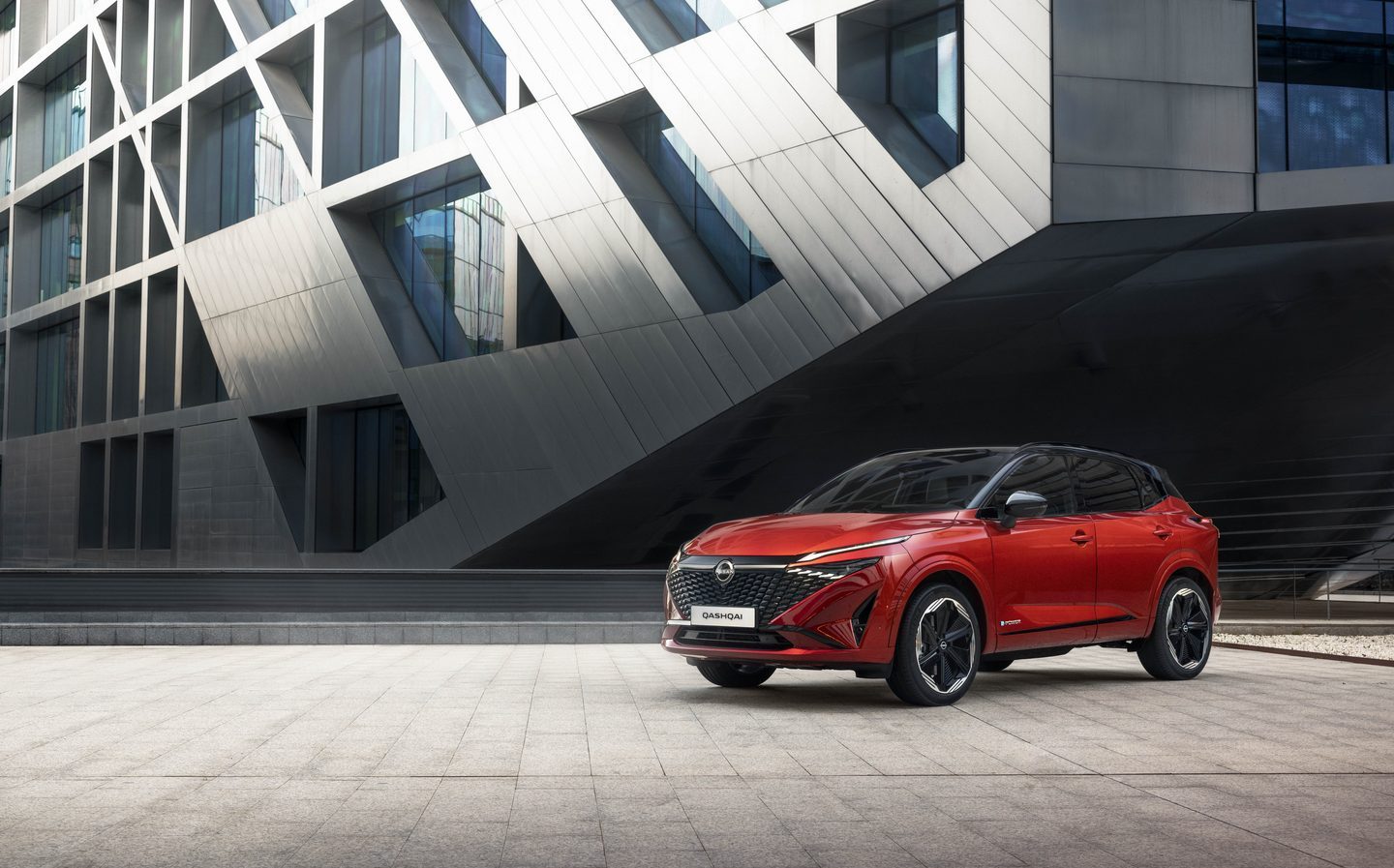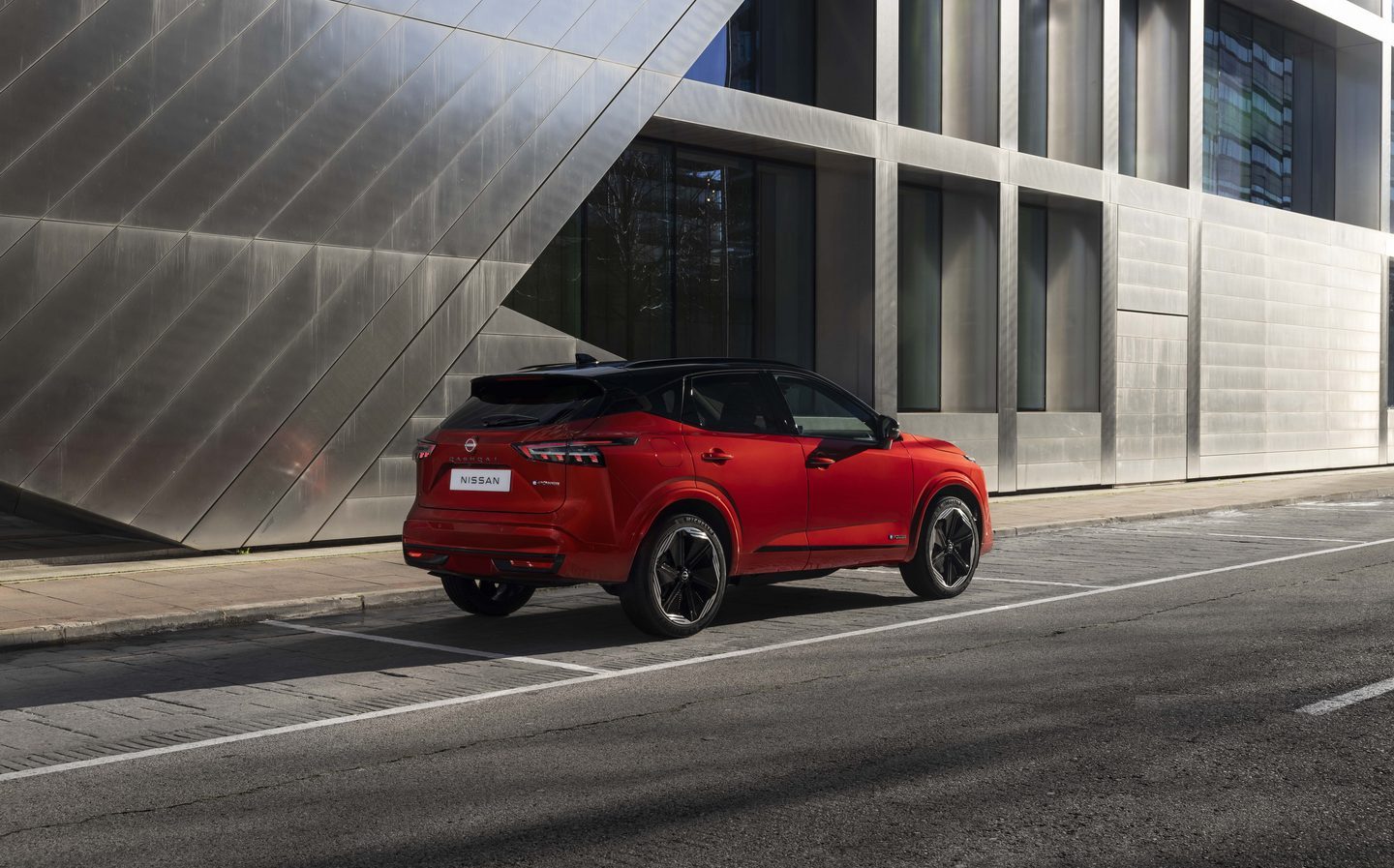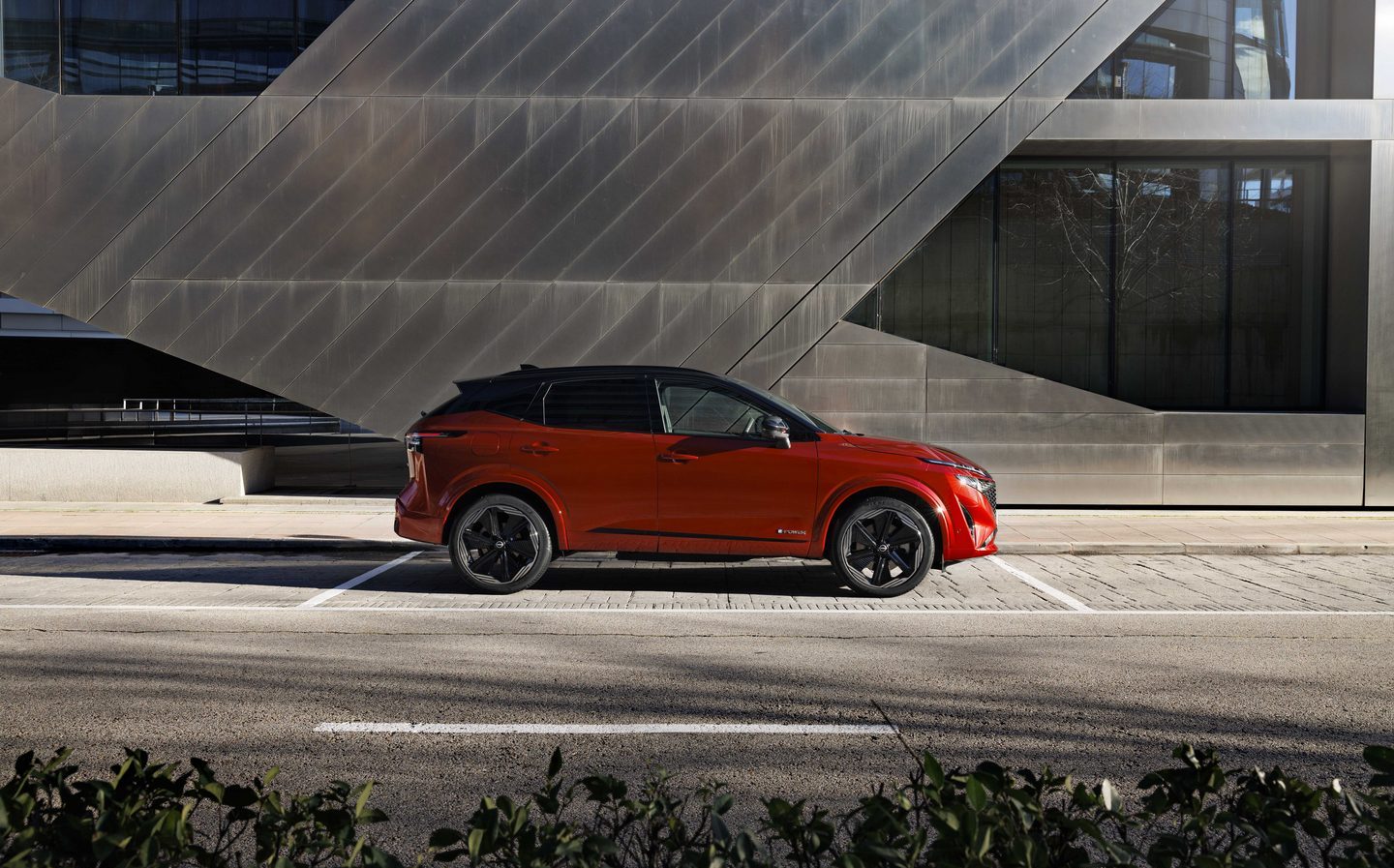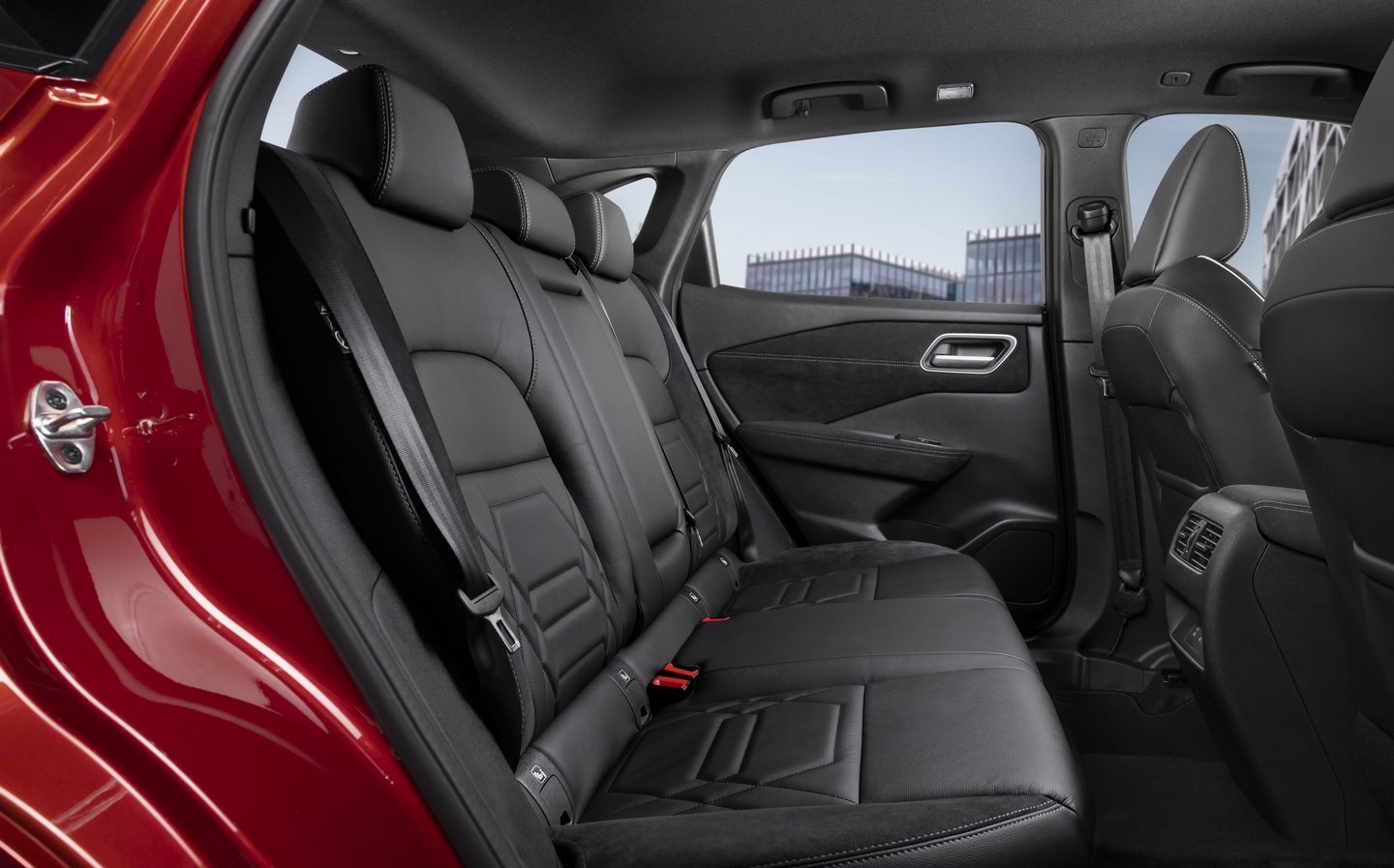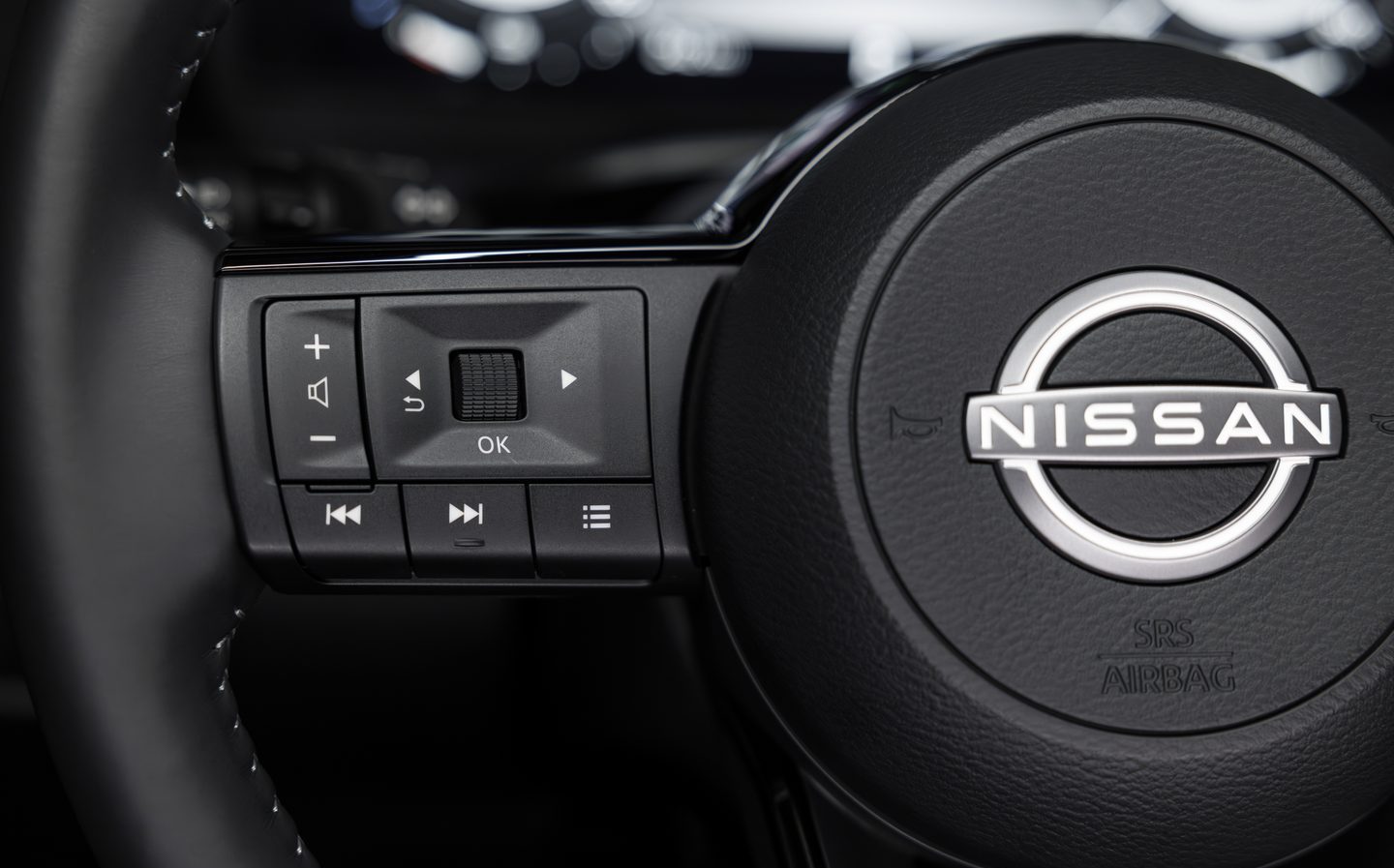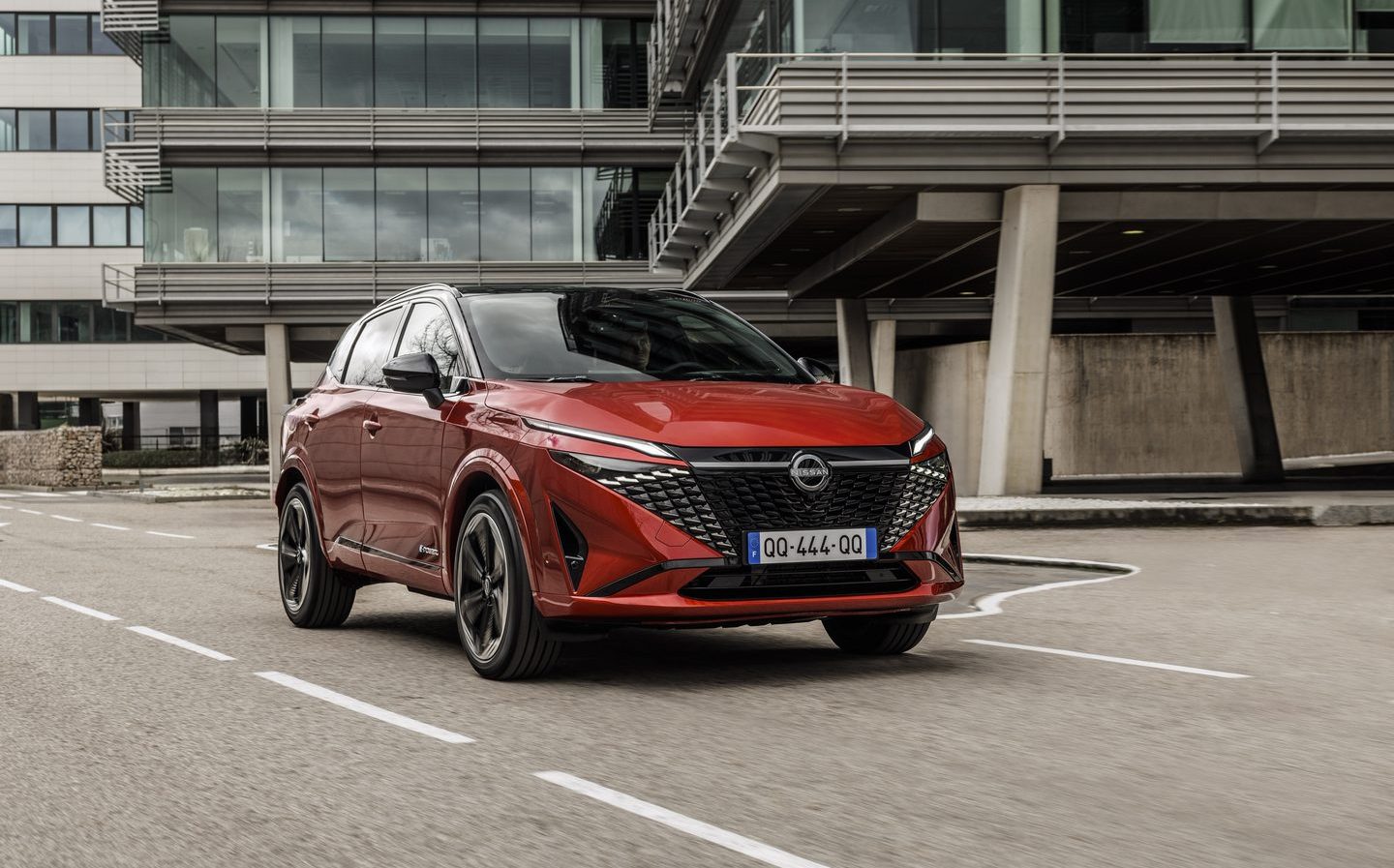Nissan Qashqai e-Power 2024 review: Solid, sensible SUV sustenance, but tastier alternatives are on offer
Needs a bit of chilli sauce kick
At no point in life has anyone, ever, suddenly got up, pulled their coat on, and said: “Come on, darling; let’s go out for a cheeky jacket potato.”
There’s nothing inherently wrong with a jacket potato, you understand. With the right toppings, it can even be a delicious, hearty meal. But it’s not exciting, is it? It’s not the watchword in haute cuisine. It is easily digestible, inoffensive sustenance for the masses.
And that brings us right onto the Nissan Qashqai. To call it a baked potato of a car would be unkind, but we think you can see where we’re going with this one.
In that, we’re pretty certain no one sets out to buy a Nissan Qashqai. They just… end up with one, because it does everything to an adequate or above average standard, without ever being extraordinary in any way. It might not tug on your heartstrings, but neither is it going to put you off by being needlessly outlandish or weirdly daring, either.
A lack of spice hasn’t stopped this genre-defining – we’ll come back to this – vehicle proving ridiculously palatable to the public, though. The third-generation model, launched just three years ago, has already racked up 350,000 sales across Europe.
Indeed, since it first appeared late in 2006, only in 2007 has the Nissan sold less than 100,000 units per annum across the continent. In 2017 alone, it racked up nearly a quarter-of-a-million European sales.
And here in the UK, which you could argue is its home market as it is bolted together up in Sunderland, it’s a behemoth in showrooms. Last year, the Qashqai was number two in the overall sales chart, with more than 43,000 finding homes throughout 2023. In 2022, it came in top — crowned king with 42,704 examples shifted. This year, it’s sitting third in the chart as we write, just a few hundred units off the Kia Sportage in second.
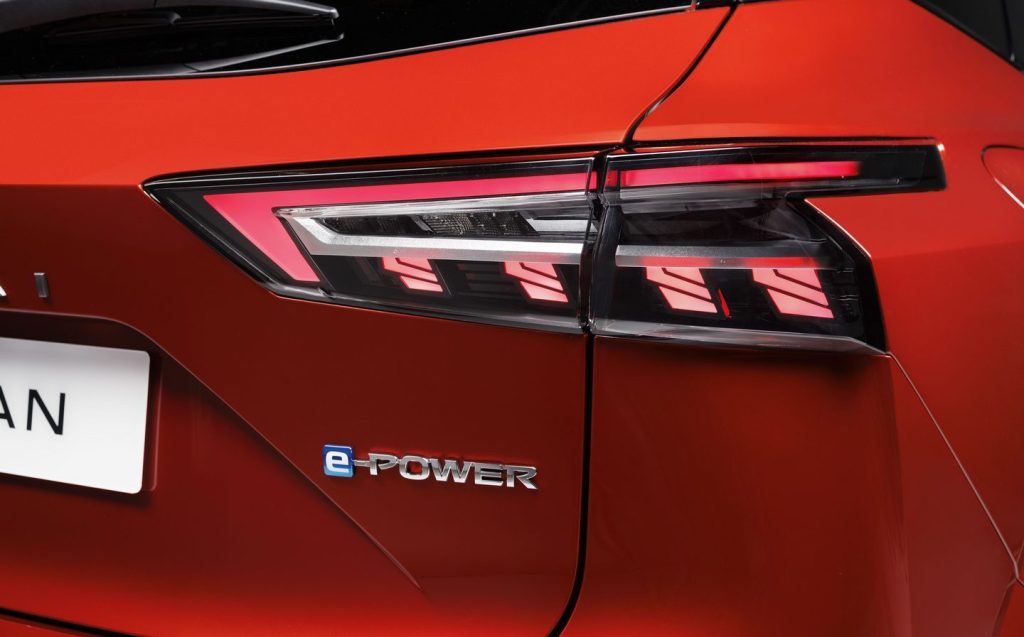
But it would seem that we, as the car-buying public, have a taste for stodgy meals, if these astonishing sales numbers are anything to go by and the food-related metaphor hasn’t been stretched too thin.
If we take the Qashqai as the essential potato base, then, you have a variety of trims to liven things up a bit – think of these as your cheese or coleslaw or tuna mayo toppings, if you will.
As before, they run Acenta Premium, N-Connecta, Tekna and then Tekna+. However, slotting into this hierarchy, alongside Tekna (they’re the same price), is an all-new specification called N-Design.
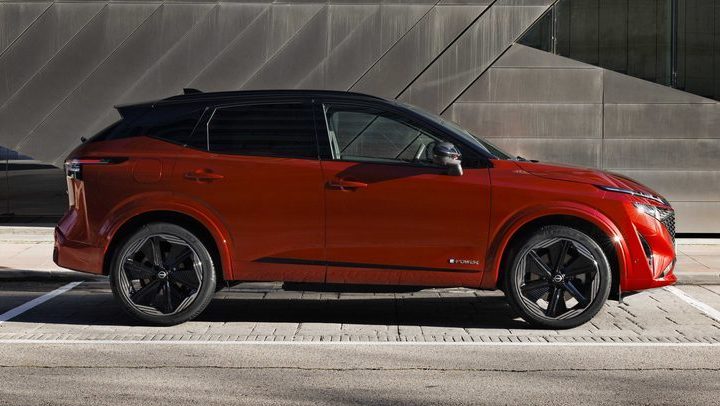
This adds body-coloured panels beneath the doors and over the wheel arches, as well as a set of eye-catching 20in alloys for greater road presence.
And if, as they say, the first bite is with the eye, then the 2024 model year Qashqai is an appealing confection. It is helped by further visual updates that are part of the facelift, primarily centring on a much wider radiator grille, studded with comma-shaped details that are said to be inspired by the ancient armour of Japanese warriors.
To go with this bold new look, the LED front lights have been redesigned, as has the bumper. And the same goes at the rear, where there’s a squared-off look for the lower portion of the Qashqai and lamp clusters which are now monochrome when they’re not lit up.
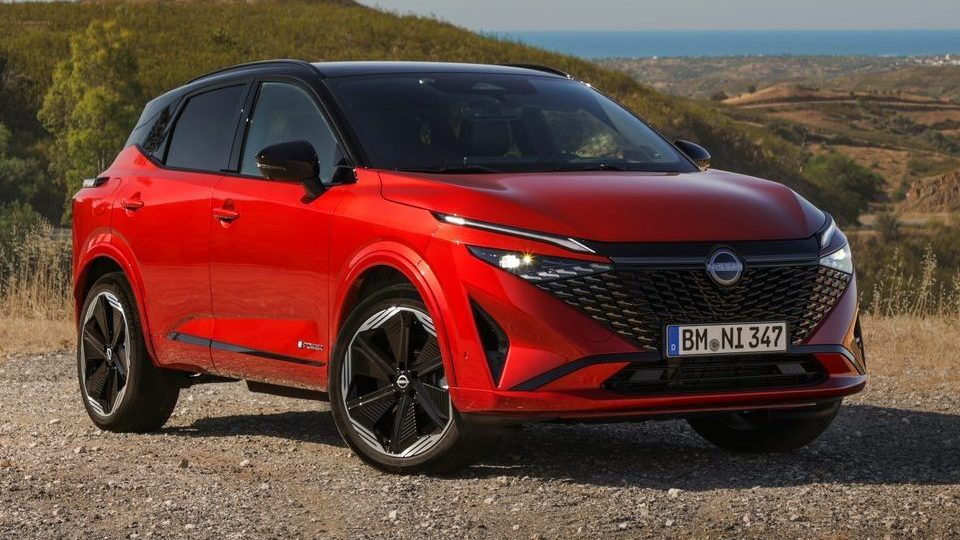
All of this adds up to make the Nissan a good-looking car, an impression which isn’t diminished when you step into the passenger compartment.
The material quality is impressive across the board, while the mix of the technological — twin 12.3in displays for the instrument cluster and the infotainment, with the option of a whopping 10.8in head-up display on the grander models — and the traditional is well judged.
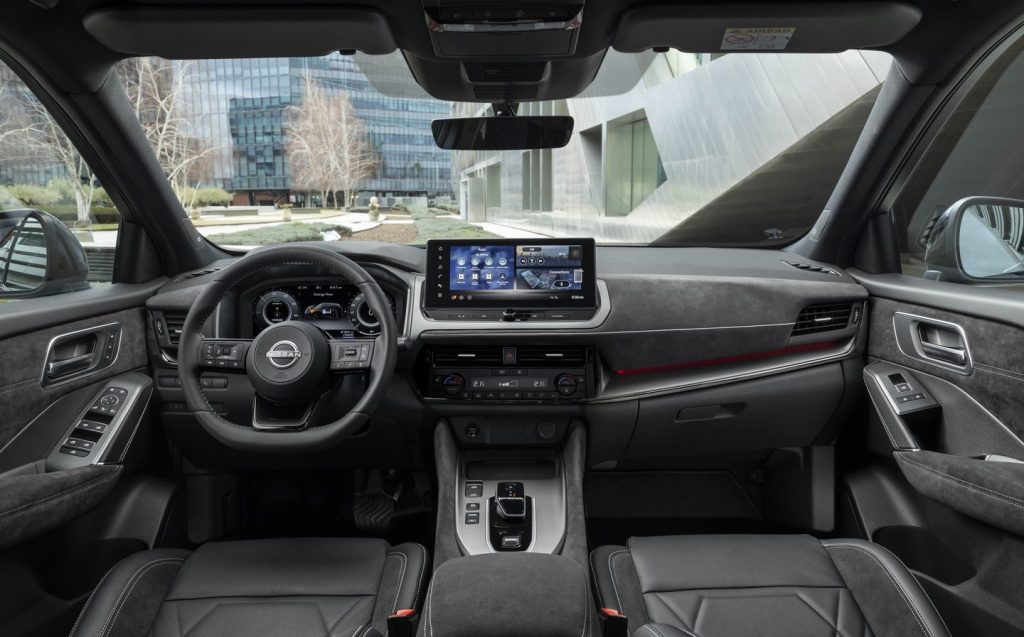
For instance, there are still physical controls for the Qashqai’s climate system and its audio, as well as various function buttons on the steering wheel.
It all works well, is intuitively laid out and feels good to the touch, so the Nissan continues to convey the sense it is an appealing dish.
Space is good inside the Qashqai, with plenty of room in the second row of seating, a decent 504-litre boot and plenty of storage compartments for odds and sods.
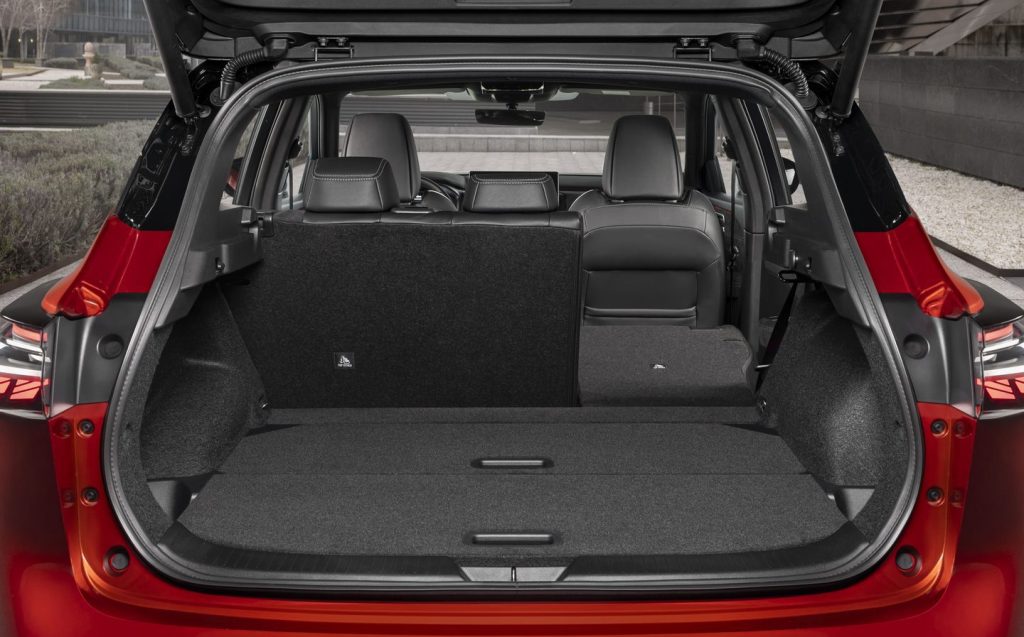
Therefore, the main changes within the car pertain specifically to the vicinity of the dashboard. For textiles, high-spec Qashqais now have Alcantara swathing most of the main fascia and door cards.
But the bigger news will delight technophiles, as this is the first Nissan model for Europe which has Google built-in for its infotainment system.
This vastly improves the crossover’s mapping graphics on the display, as well as its general connectivity – sign into it with your Google Account, and you can ask the vehicle all manner of questions, configure your various preferences more easily, and enjoy features like Amazon Alexa.
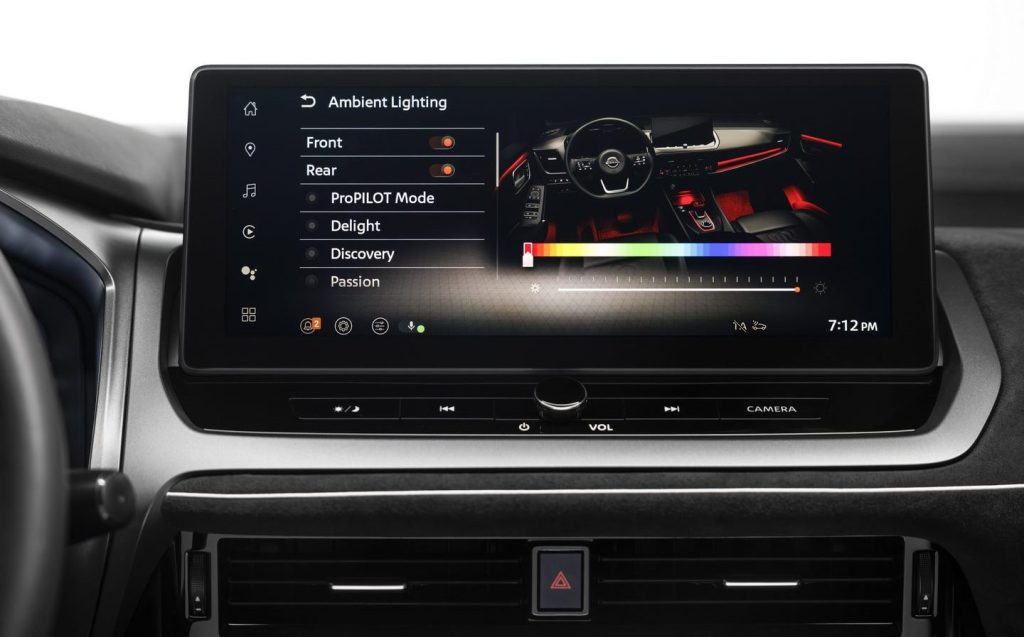
So, it’s easy on the eye outside, and well-appointed and comfortable within — surely the Nissan Qashqai is more exciting than a baked potato?
Well, that depends on how you want the car to drive. Admittedly, family crossovers like this don’t need to be thrilling and dynamic in the corners, and you could well argue that few — if any — of the Qashqai’s natural rivals are any great shakes for handling.
But the Nissan is very straightforward in terms of its driver appeal. In that it doesn’t really have any to speak of. Light, feel-free steering, notable levels of body roll and tyres which begin to squeak their disapproval as soon as you’re even remotely ambitious with your corner-entry speed all dissuade any kind of spirited driving when you’re behind the Qashqai’s wheel.
This is most odd, given something we touched upon earlier regarding this model’s genre-defining status.
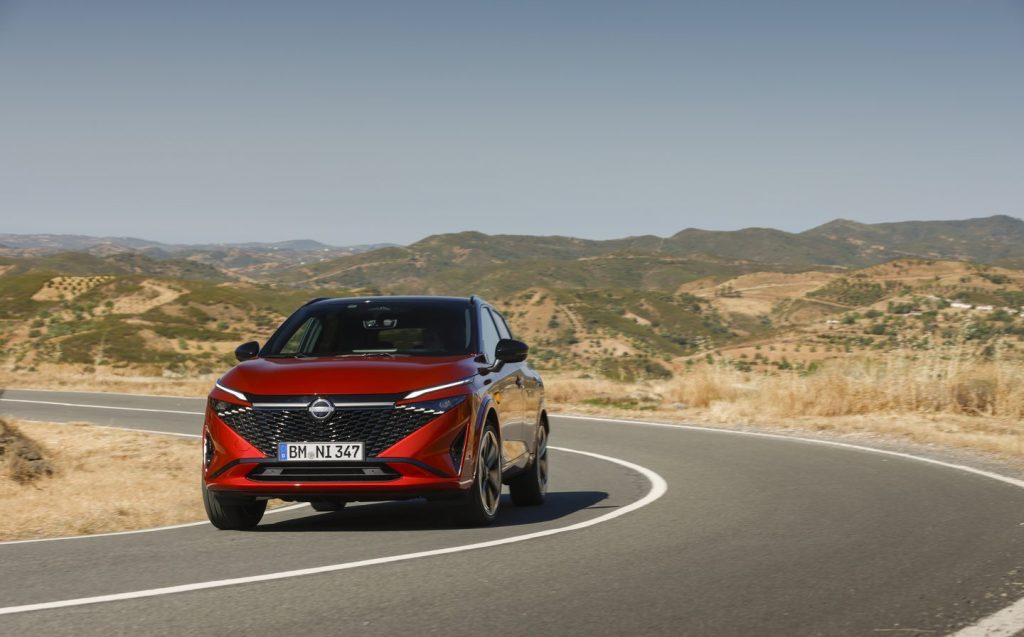
The Qashqai only came about back in 2006 because Nissan was trying to offer something which looked like an SUV, but which had the underpinnings and running costs of a family hatchback — and the driving characteristics of lower, lighter cars too.
It was trying to provide all the benefits of a 4×4, without the associated financial drawbacks of an SUV and with a decidedly car-like on-road driving experience mixed in as well. And its roaring success inspired many, many copycats.
It’s for this reason that Nissan lays claim to inventing the crossover segment, even if Toyota and Honda were selling their ideologically similar RAV4 and CR-V models back in the 1990s.
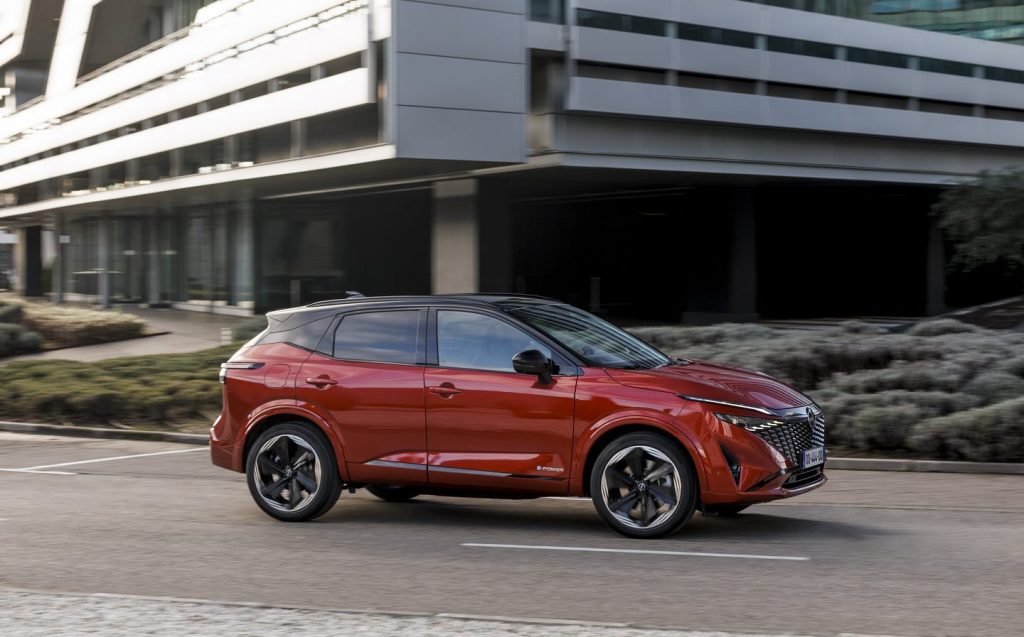
Indeed, it’s hard to argue anything besides the fact cars like the Ford Puma, the only vehicle which has consistently outsold the Nissan in the UK in the past 18 months, wouldn’t even exist if it were not for the Qashqai setting the template.
But where the Puma, and other crossovers, have a crisp, refreshing, tasty dynamic experience to savour, the Qashqai does not. It’s not that it’s objectively bad; rather, it’s just… inert.
Still, this won’t matter, because in terms of its spectacular ease-of-use and laid-back nature, it’s easy to see why the Qashqai satisfies so many buyers’ hunger for a family crossover like this.
Just two engine choices are on offer in the Nissan’s range, these being the 1.3-litre mild-hybrid petrol, and then this e-Power hybrid.
The Japanese car company tries to call this an “electric car without the hassle of plugging it in”, because the unusual way its powertrain works is that a 140kW electric motor is the only thing which physically drives the Qashqai’s wheels.
However, an onboard 1.5-litre three-cylinder petrol engine is fitted as a “range extender” to top up the electric motor’s battery on the move — good job, really, as the lithium-ion powerpack is little more than a 1.8kWh amuse bouche.
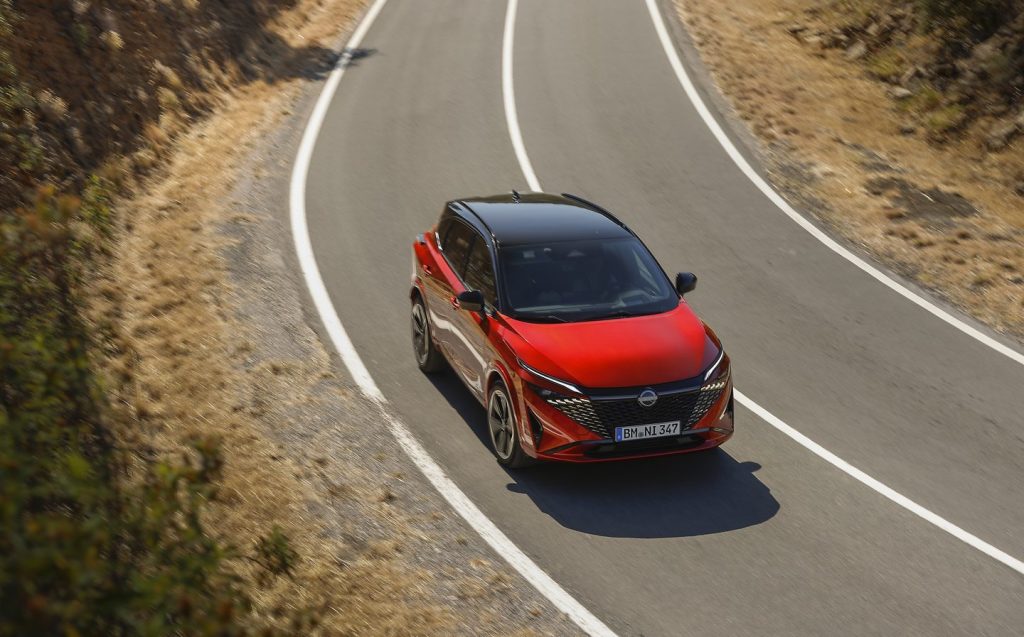
Strictly speaking, the Qashqai e-Power is a hybrid. And it’s a very good one at that, providing smooth, fuss-free driving manners which make the whole experience of being behind its wheel as unintimidating and simple as possible.
It rides well, its light and quick steering makes placing it accurately on the roads a doddle, and the general hush of the passenger compartment at all speeds is most admirable.
You hear little of tyre or wind noise, and unless you absolutely plant the accelerator pedal into the carpet and ask the e-Power for all of its 187bhp and 244lb ft of torque (twisting force), the 1.5-litre engine — which runs more often than you might imagine in a vehicle with a heavily electrified bent — stays remarkably quiet.
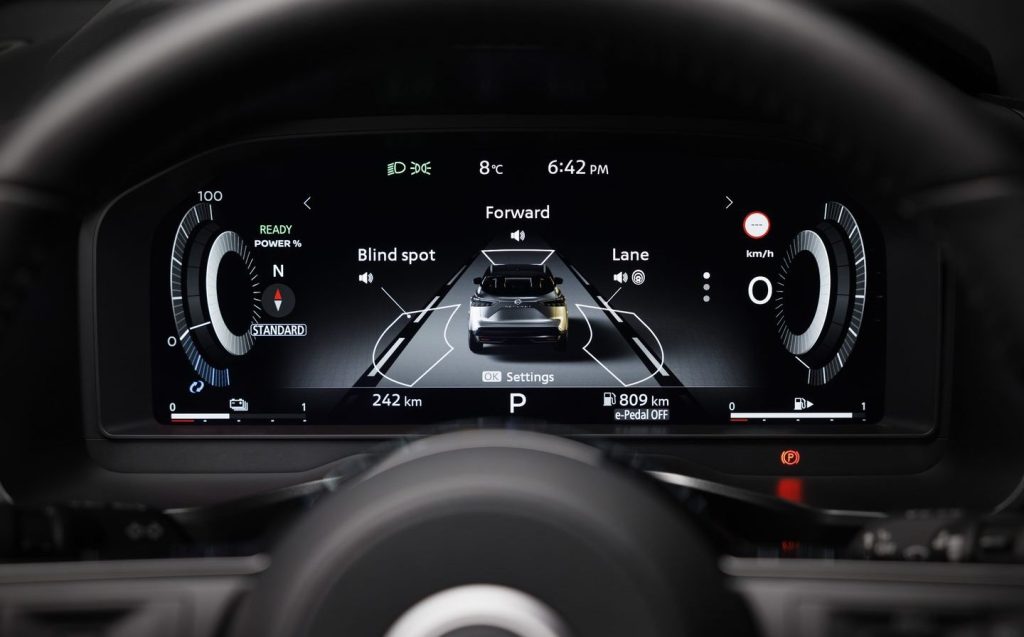
Even when it is working hard, the engine makes an appealing trilling noise, although the way the system works it can sound like the Qashqai is equipped a continuously variable transmission, when it isn’t. It has a single-speed reduction gear, like most electric vehicles.
It also doesn’t quite have one-pedal driving. Put the Qashqai e-Power’s stubby gear lever in D and it will coast along freely when you lift off the throttle, so you have to click it again for B, which ups the level of regenerative braking. This slows the car more noticeably when you take your foot off the accelerator but it still needs some actual brake-pedal use to get it to decelerate for sharper corners or come to a complete stop in traffic.
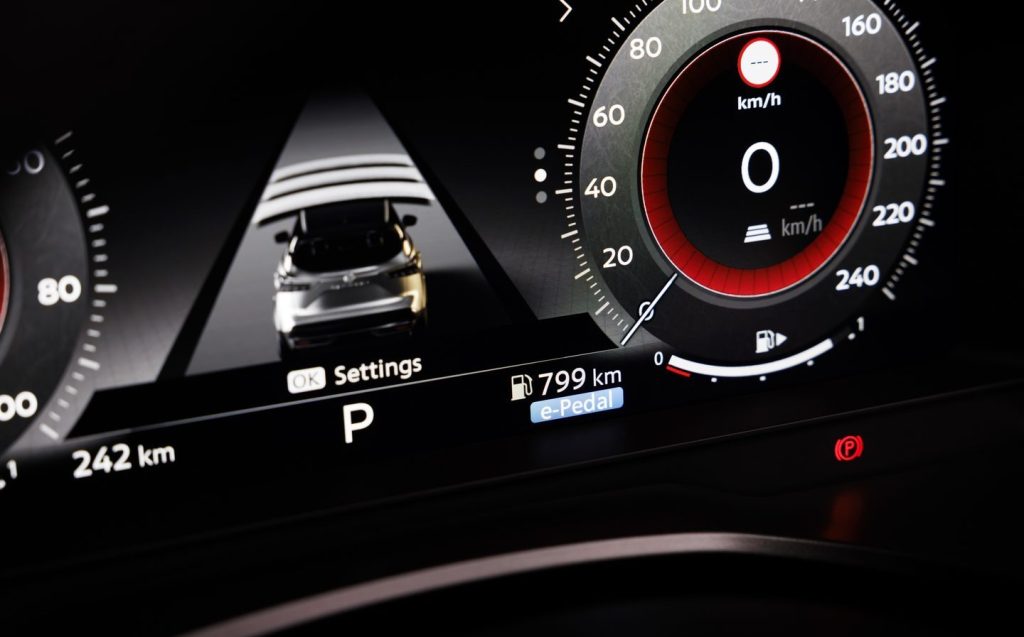
There is an “ePedal” button on the console which tries to mimic one-pedal driving in the city, but even that won’t bring the Nissan to a complete halt so really, at no point does this car behave fully like an EV.
But that won’t put people off. The Qashqai will continue to sell in its droves, which is why Nissan felt it didn’t need to do a lot to this crossover as part of its facelift.
A new radiator grille and lights, some added Google tech, splashes of Alcantara, the sporty-looking N-Design trim — these are all tweaks to the dish, rather than a potentially divisive all-new recipe.
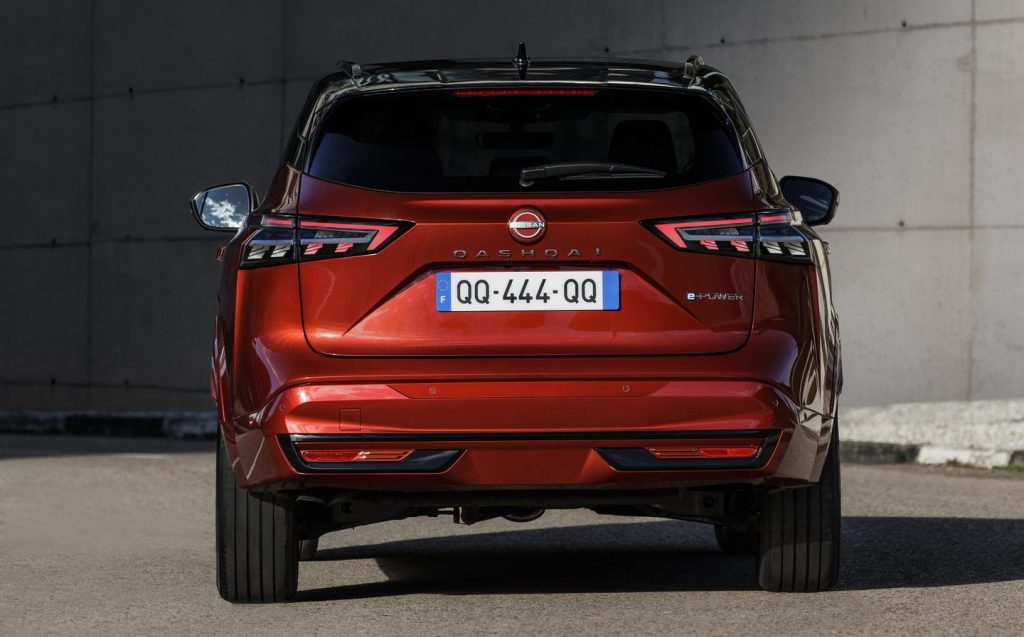
And while the Nissan Qashqai might well be the jacket potato of crossovers, the company has at least made sure it has given it the fanciest, most mouth-watering toppings that it can to keep up the vehicle’s appeal in an increasingly demanding age.
So, while there might be tastier alternatives out there, you might find that the updated Qashqai is all the meal you need when it comes to family crossover motoring. And sometimes, there’s absolutely nothing wrong with a simple spud slathered in baked beans and grated cheddar cheese, is there?
Related articles
- If you found news on the new five-door Mini Cooper interesting, you may want to read our review of the new electric Mini Cooper SE
- You may like to check out the new Mini Countryman JCW
- Or read more about Mini’s built-in video gaming system
Latest articles
- Porsche has begun testing the electric Cayenne
- Cupra Leon 272 eHybrid 2024 review: Bigger battery, better tech … but is it a Cupra?
- Porsche 911 GTS 2024 review: Hybrid heresy or more Stuttgart genius?
- Extended test: 2023 Vauxhall Astra Sports Tourer GS PHEV
- Ford Capri revival has faced a lot of flak… but are buyers put off? Here’s what visitors to the Festival of Speed had to say
- Aston Martin Valkyrie AMR-LMH hypercar hits track ahead of 2025 Le Mans challenge
- F1 2024 calendar and race reports: What time the next grand prix starts and what happened in the previous rounds
- ‘No timeframe’ for how long Volvo’s returning estate cars will be on sale in UK
- Kia Picanto 2024 review: Updates add spice to cute Korean city car




